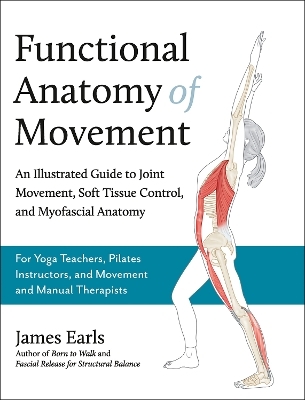
Functional Anatomy of Movement
An Illustrated Guide to Joint Movement, Soft Tissue Control, and Myofascial Anatomy
Seiten
2023
Lotus Publishing Limited (Verlag)
978-1-913088-38-5 (ISBN)
Lotus Publishing Limited (Verlag)
978-1-913088-38-5 (ISBN)
Countering the oversimplified teaching of musculoskeletal anatomy via static positions, James Earls argues for a novel approach. He calls for new tools and vocabulary to observe and articulate anatomy in motion and posits that observing varied bodies in different environments should refine our anatomy understanding.
Earls explores the profound effects of understanding fascial tissue interconnectedness-described as anatomy trains, myofascial chains, meridians, or slings-on our anatomical knowledge. He delves into the concept of tensegrity, emphasizing its contribution to our appreciation of the intricacy and interdependence of real-world body movements.
By situating the different theories and metaphors of myofascial continuities against the context of common real-life movements such as sports exercises and yoga asanas, Earls describes the utility and application of each theoretical system to many different situations and issues.
Using up-to-date research, Earls digs into important questions for physical and manual therapists: which tissues really are contiguous? Does continuity of tissue actually show or demonstrate transmission of force and communication along those lines? And does fascial tissue have to be continuous for the body to actually transfer force?
Accessibly written and fully illustrated, Functional Anatomy of Movement offers practical applications for physical therapists, chiropractors, and bodyworkers, as well as new tools for teachers of yoga and Pilates to develop a deeper understanding of anatomy and movement.
Earls explores the profound effects of understanding fascial tissue interconnectedness-described as anatomy trains, myofascial chains, meridians, or slings-on our anatomical knowledge. He delves into the concept of tensegrity, emphasizing its contribution to our appreciation of the intricacy and interdependence of real-world body movements.
By situating the different theories and metaphors of myofascial continuities against the context of common real-life movements such as sports exercises and yoga asanas, Earls describes the utility and application of each theoretical system to many different situations and issues.
Using up-to-date research, Earls digs into important questions for physical and manual therapists: which tissues really are contiguous? Does continuity of tissue actually show or demonstrate transmission of force and communication along those lines? And does fascial tissue have to be continuous for the body to actually transfer force?
Accessibly written and fully illustrated, Functional Anatomy of Movement offers practical applications for physical therapists, chiropractors, and bodyworkers, as well as new tools for teachers of yoga and Pilates to develop a deeper understanding of anatomy and movement.
James Earls is a writer, lecturer, and bodyworker who has more recently concentrated on blending movement with manual therapy to create a new functional approach to bodywork through his company, Born to Move. Earls is now concentrating on finding new approaches to understanding how to apply movement and myofascial principles to bodywork. He is also the author of Born to Walk, Fascial Release for Structural Balance, and Understanding the Human Foot (all published by Lotus Publishing).
Chapter 1
Functional, not Textbook, Anatomy
Chapter 2
Why Do we Move the Way We Do?
Chapter 3
Fascia-The Body's Problem Solver
Chapter 4
Orienting Ourselves
Chapter 5
Stepping Forward
Chapter 6
Moving to the Side
Chapter 7
Twist and Shout
Chapter 8
Real and Relative Motion
| Erscheinungsdatum | 03.10.2023 |
|---|---|
| Zusatzinfo | 150 colour |
| Verlagsort | Chichester |
| Sprache | englisch |
| Maße | 189 x 240 mm |
| Gewicht | 650 g |
| Themenwelt | Medizin / Pharmazie ► Medizinische Fachgebiete ► Orthopädie |
| Medizin / Pharmazie ► Physiotherapie / Ergotherapie | |
| Studium ► 1. Studienabschnitt (Vorklinik) ► Anatomie / Neuroanatomie | |
| ISBN-10 | 1-913088-38-3 / 1913088383 |
| ISBN-13 | 978-1-913088-38-5 / 9781913088385 |
| Zustand | Neuware |
| Informationen gemäß Produktsicherheitsverordnung (GPSR) | |
| Haben Sie eine Frage zum Produkt? |
Mehr entdecken
aus dem Bereich
aus dem Bereich
Struktur und Funktion
Buch | Softcover (2021)
Urban & Fischer in Elsevier (Verlag)
44,00 €
Buch | Hardcover (2022)
Urban & Fischer in Elsevier (Verlag)
220,00 €
+ Web + Lehrbuch
Buch | Hardcover (2022)
Urban & Fischer in Elsevier (Verlag)
249,00 €


